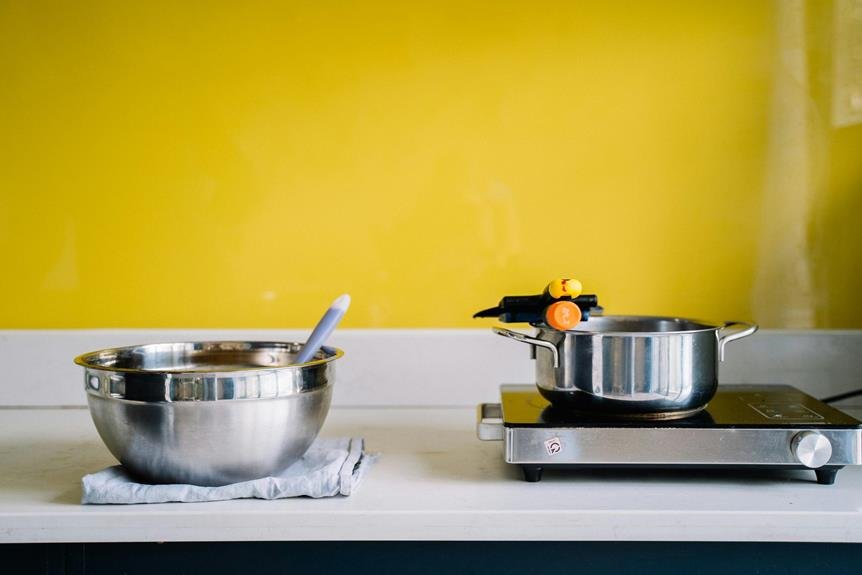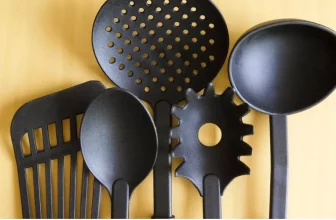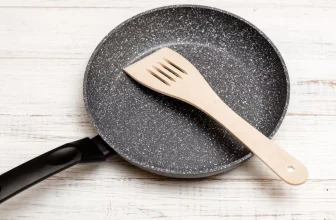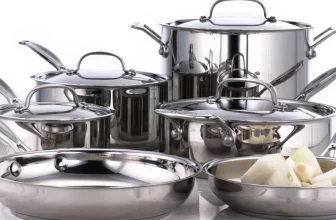
When considering induction-compatible cookware, it's crucial to focus on specific qualities that can significantly impact your cooking experience. The right choice can make a substantial difference in how efficiently and effectively you can prepare your meals. From material composition to design elements, every aspect plays a role in the performance of your cookware on an induction stovetop. By understanding what to look for and why it matters, you can elevate your culinary skills and achieve superior results in the kitchen.
Induction-Compatible Cookware Materials
When choosing induction-compatible cookware materials, opt for those that contain ferromagnetic metals. These metals, such as iron or steel, are essential for effective cooking on induction stovetops because they respond to the magnetic field generated by the cooktop. Without ferromagnetic materials, the cookware won't heat up, rendering it incompatible with induction cooking.
Stainless steel, cast iron, and enameled cast iron are popular choices for induction cookware due to their ferromagnetic properties. Stainless steel pans often have a layer of iron or aluminum sandwiched in the base to enhance their magnetic capabilities. Cast iron skillets and pots are naturally induction-friendly, making them versatile options for your kitchen. Enameled cast iron offers the benefits of cast iron with an additional enamel coating, providing a non-stick surface and easy cleanup.
When shopping for induction-compatible cookware, remember to check for the induction symbol or verify with the manufacturer that the materials used contain ferromagnetic metals. By selecting the right cookware materials, you can ensure efficient and safe cooking experiences on your induction stovetop.
Key Features for Induction Cooking
For efficient induction cooking, prioritize cookware with ferromagnetic metals to ensure optimal heat transfer and compatibility with your induction stovetop. Look for pots and pans made of materials like stainless steel, cast iron, or magnetic stainless steel as they work best with induction cooktops.
Another key feature to consider is the flatness of the cookware's bottom. Induction cooking relies on direct contact between the cookware and the stovetop for heat transfer, so a flat and smooth bottom ensures maximum efficiency.
Additionally, choose cookware with a good amount of weight to it. Heavier pots and pans are less likely to move around on the stovetop, providing a stable cooking surface.
Handles that stay cool to the touch are also essential for safe and comfortable cooking experiences. By focusing on these key features, you can enhance your induction cooking performance and enjoy delicious meals with ease.
Considerations for Optimal Performance
To maximize your induction cooking experience, prioritize selecting cookware that promotes efficient heat transfer and stability on your stovetop. Look for pots and pans with a flat, magnetic bottom to ensure proper contact with the induction burner, allowing for quicker heating and precise temperature control. Opt for cookware made from materials such as stainless steel or cast iron, known for their magnetic properties that work effectively with induction stoves.
Consider the size of your cookware in relation to the size of the induction burner. Using appropriately sized pots and pans ensures maximum energy efficiency and even cooking. Additionally, choose cookware with sturdy handles that are securely attached to the pots and pans to prevent accidents and spills while transferring or stirring food.
Lastly, select cookware with a smooth and flat cooking surface to optimize heat distribution and prevent hot spots. Avoid warped or uneven-bottomed cookware that can hinder the induction cooking process and lead to inconsistent results. By paying attention to these considerations, you can enhance the performance of your induction cookware and elevate your cooking experience.
Maintenance and Longevity Factors
Ensuring proper care and attention to your cookware is essential for maintaining its longevity and performance. To prolong the lifespan of your induction-compatible cookware, it's important to clean it thoroughly after each use. Avoid using harsh abrasives that can scratch the surface, as this can diminish its effectiveness on induction cooktops. Opt for gentle cleaning agents and non-abrasive sponges to preserve the cookware's coating.
Additionally, storing your cookware properly is crucial for preventing damage. Stack your pots and pans carefully, using protective layers between them to avoid scratches. If your cookware has lids, store them separately to prevent unnecessary pressure on the handles.
Regularly inspect your cookware for signs of wear and tear, such as chipping or warping. Replace any damaged pieces promptly to maintain optimal performance. By following these maintenance practices, you can ensure that your induction-compatible cookware remains in top condition for years to come.




